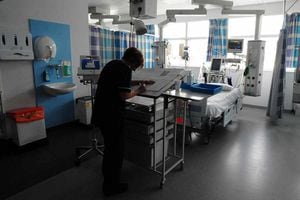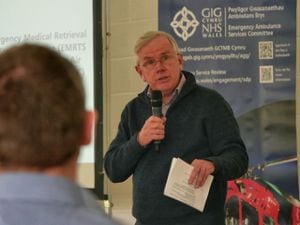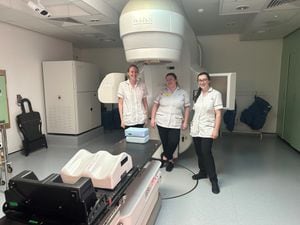Shrewsbury and Telford hospital rooms went over safe capacity
Hospital rooms at the Shrewsbury and Telford Hospital NHS Trust exceeded their safe capacity between July and September, according to NHS England.

Doctors said the summer heatwave put more strain than usual on the NHS, and warned patient numbers would likely rise in winter, when hospitals are busier.
NHS data shows that, on average, 614 out of 683 beds were occupied during the period. That is a rate of 90 per cent, above the threshold of 85 per cent when patient safety is considered to be compromised.
This is higher than five years earlier, when bed occupancy reached 87 per cent.
Meanwhile, rooms at the The Robert Jones and Agnes Hunt Orthopaedic Hospital NHS Foundation Trust were within their safe capacity in the same time period.
NHS data shows that, on average, 129 out of 161 beds were occupied during the period. That is 80%, below the threshold of 85%, when patient safety is considered to be compromised.
Health leaders said the overnight numbers may underestimate the crowding because the count is taken at midnight, which is not the busiest time in a hospital.
The data covers patients under the care of a consultant, but excludes critical care cases and those being attended by nurse. Cots for babies are also excluded.
Strain
Most of the beds in the Shrewsbury and Telford Hospital NHS Trust, 646.1630435, were reserved for patients with general and acute illnesses, such us pneumonia or renal colics. The rate of occupancy for this sector was 92 per cent.
Amber Jabbal, head of policy at NHS Providers, which represents all trusts, said: "These figures show that the health and care system is already under strain going into winter.
"In our recent report Steeling Ourselves For Winter 2018-19, NHS trusts warned that they are heading into winter in a more challenging position than last year.
"Bed occupancy levels have remained high and this year’s heatwave played a part in this, with increased emergency demand. This spike in demand has left services ‘running hot’ even before the winter months have started."
Nationally, the proportion of occupied beds was 87 per cent, compared with 85 per cent five years earlier.
A British Medical Association spokesman said: "Since the summer of 2010, the NHS in England has lost 10 per cent of its bed stock and as of today, it has the lowest number of beds since data started to be collected.
"Bed occupancy in 2018 has consistently exceeded the figures recorded the previous year, and while the recommended occupancy figure of 85% should be much more achievable during the summer months, this year it was almost 90% for general and acute beds."
Professor Neil Mortensen, vice president of the Royal College of Surgeons, said overcrowded hospitals can lead to increased infections rates for patients, and make it more difficult to contain flu outbreaks or vomiting bugs.
He added: "High bed occupancy rates can also lead to an increase in planned operations needing to be cancelled at the last minute, as there is not enough space in hospitals for new patients."





